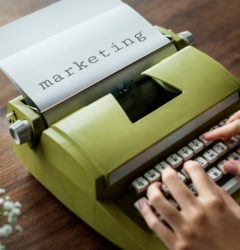15 Nov
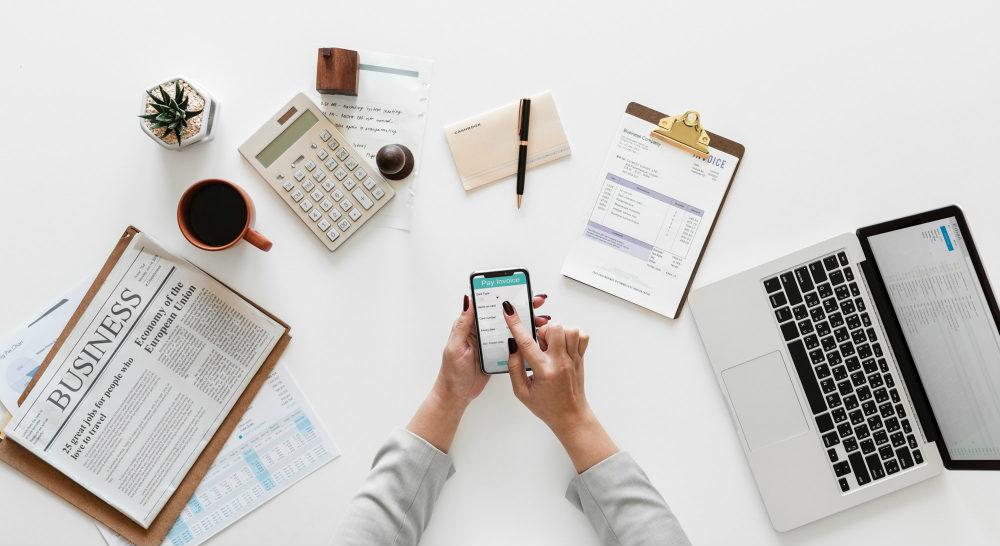
Professional email writing is not a task everybody can master, nor is it a simple task that can be achieved in a snap of a finger.
Writing a professional email takes time to practice to avoid offending or turning off the recipient. The sender has to take into account various factors like politeness, formality, amiability, value, flawlessness, and more. Then the sender must incorporate all these elements to craft a succinct email that obtains a goal or purpose.
If you’re stuck in limbo, here are the top 10 professional email writing tips that’ll help you get started.
1. Know your target audience

Always determine your target audience when writing a professional email. If you’re writing an email blast for your brand, make sure you communicate with particular demographics efficiently.
This step will enable you to determine the format, tone, or terminologies you need to deliver your message across effectively.
And while you’re at it, figure out what the purpose of the professional email is. If your email is aimed at offering your products or services, pick out your customers’ pain points. That way, you’ll know how to present your products or services in the best light possible resolving their needs and wants.
2. Write captivating subject lines
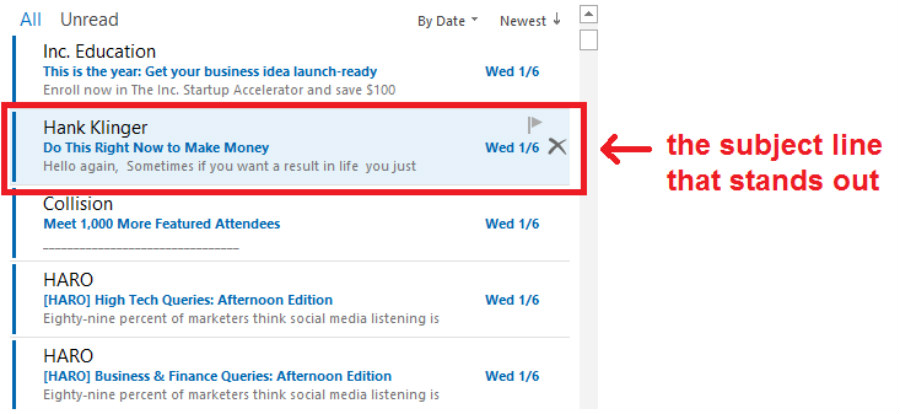
One ingredient in professional email writing is a catchy subject line. An enticing and significant email subject line increases your open and click rates — which is hugely beneficial if you’re ramping up your email marketing.
Here are some helpful tips you can try when writing email subject lines:
- Keep it short and sweet
- Make it an overview of the entire email
- Make it meaningful and don’t use filler words
- Set deadlines to grab attention
- Mention the value for the recipient
- Personalize the subject line
- Don’t use ALL CAPS
- Avoid using emojis or a bunch of punctuation marks
- Include a call to action word/s like the example above
3. Personalize your professional email writing
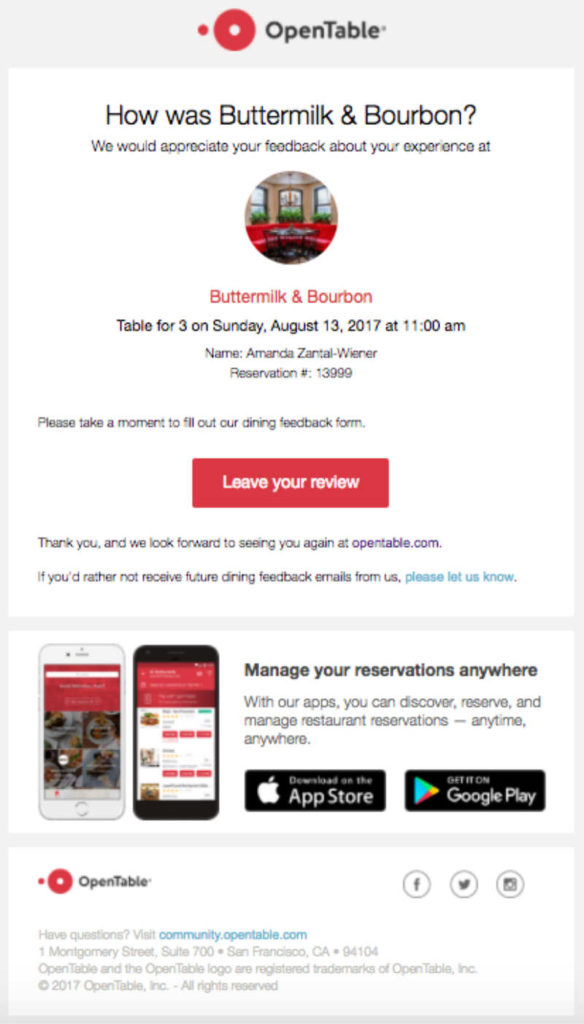
An excellent professional email writer does his or her due diligence before crafting the email. Doing a background check on the company or person will allow you to tailor-fit your email for higher open rates.
In fact, when you include a personal touch, recipients will likely read your emails until the end. Why? Because this shows that you value them by knowing a little bit about them and the work they do.
Check out Buttermilk and Bourbon’s follow-up email to one customer.
4. Go straight to the point

Don’t beat around the bush as your recipients might not have the luxury of time to read long, dull emails. Reduce the fluff, bells, and whistles, flowery words, and whatnot — they don’t need to hear all that.
Keep your message concise with a primary focus on your goal or purpose. Also, make your professional emails scannable by including numbers and bullet points.
Plus, put a sense of urgency to make them act but make sure you stay polite. Here’s an example from Jerz’s Literacy Weblog.
5. Introduce yourself clearly and professionally
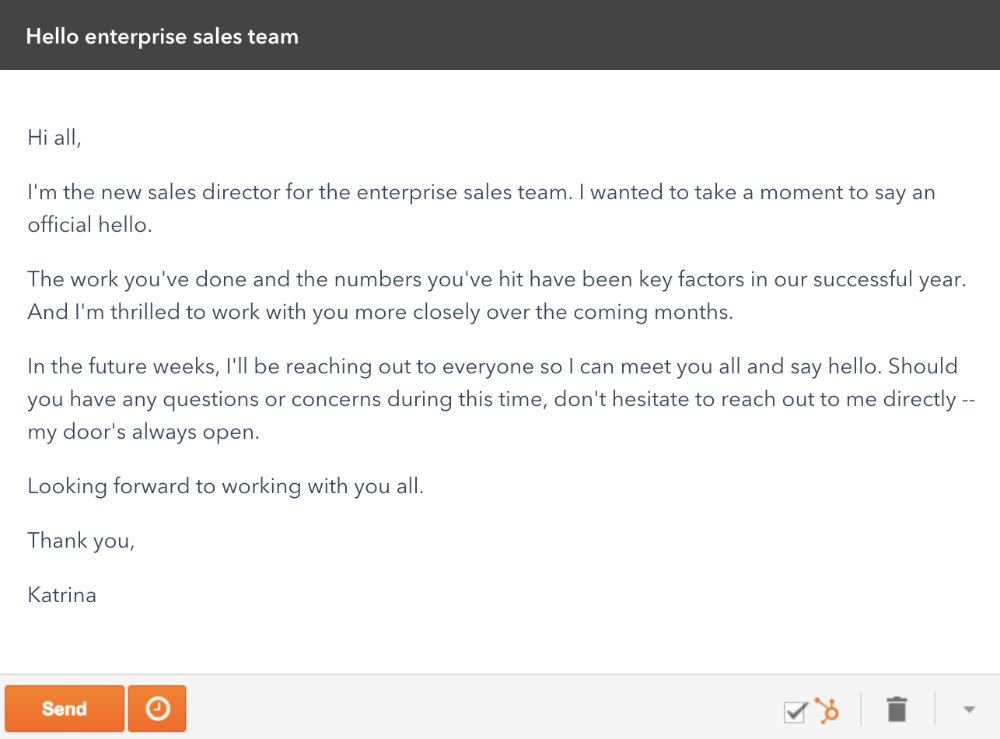
Professional email writing means you need to craft the emails with professionalism in mind. And that includes introducing yourself properly without being too cold or unwelcoming.
The last thing you want your email to do is to come off as being too authoritative or worse — rude!
Make sure you introduce yourself properly, just like this HubSpot email example. In this example, the overall email tone sounds professional yet warm and welcoming.
6. Include a good signature

One way to make your professional emails stand out and gain credibility is when you include a good signature.
An email signature is attached at the bottom of the email with your name, business contact details like number and email address, designation, and company website. In some cases, professionals also include a photo, company logo, or a meaningful quote.
This example from Yesware shows a photo, all the essential information, and icons to social media platforms.
7. Make the email about them

People like talking about themselves. In fact, people like other people talking about themselves. Regardless of what your professional email’s purpose is, make sure to include a thing or two about the recipient.
Mention their achievements or superb work they did that you came across with. Once you establish rapport, pitch in whatever you want in your email.
Here’s an outreach email example from HubSpot. The subject line is catchy enough, followed by the first line in the body that says, “I’m inspired by the work that you’ve done in customer success, not to mention your unique career path.”
This strategy is very heartwarming and will urge the recipient to read more — a perfect start when writing a professional outreach email.
8. Use proper tone when the need arises

Although it’s good to resonate with your audience or recipient, always assess the situation first.
Is it okay to use abbreviations? Should you include slang? Do you use smilies to make the emails friendlier?
Depending on the type of situation, craft your email in a way that doesn’t offend the recipient. Use formal tones and informal tones for formal and informal situations, respectively.
9. Provide value to the recipients

Professional email writing should entail providing value to your audience. Whether you’re writing professional emails internally or externally, offer value, and help no matter what.
Anything that shows you can help without expecting something in return can spark the beginning of healthy business partnerships.
Take this internal email addressed to the marketing team, for example. Firstly, the sender offers value by including the links of useful articles. Secondly, she goes above and beyond by offering her time to help with marketing strategies.
10. Proofread more than once

An excerpt from a Business Insider article on email typos should make you give more importance to proofreading professional emails
It says, “Your email typos reveal more about you than you realize.” And I agree with this statement 100 percent!
Typos, spelling, syntax, and grammatical errors are such a turnoff in professional email writing. Always make sure to proofread your emails more than once. Better yet, let a colleague read it before sending it.
